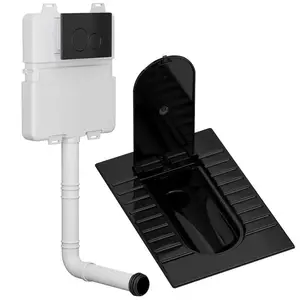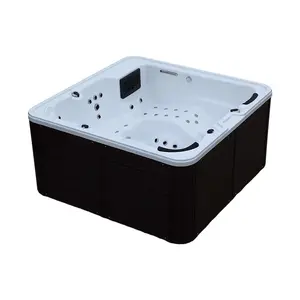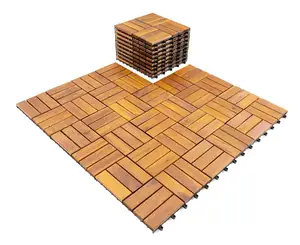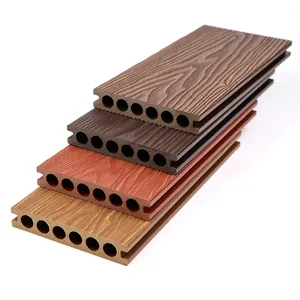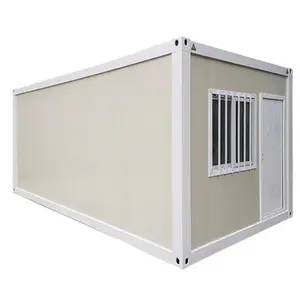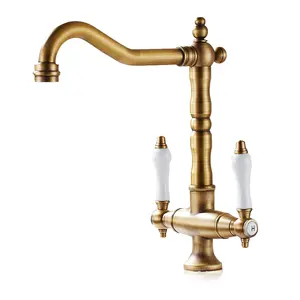Popular in your industry

































































Top categories
About hospital vinyl flooring
In the world of healthcare, the design and functionality of hospital interiors play a pivotal role in patient care and recovery. Among these elements, hospital flooring stands as a silent yet critical ally in promoting a sterile, safe, and soothing environment. This article delves into the professional's choice for hospital flooring—vinyl, a material that marries the dual imperatives of hygiene and style. We will explore how cutting-edge vinyl flooring solutions not only meet the rigorous demands of medical settings but also enhance them aesthetically, contributing positively to the healing journey of patients.
The Importance of Hospital Flooring
In the context of medical facilities, the significance of the flooring cannot be overstated. The floor is a critical component in hospitals and medical offices, serving not just as a foundation but as a vital piece of the operational infrastructure. It is essential for maintaining hygiene, ensuring the safety of both patients and staff, and contributing to the overall aesthetic appeal of the environment.
Traditional flooring options like tiles or large vinyl sheets, while common in residential or small office settings, fall short in meeting the stringent requirements of a medical environment. These conventional choices often have seams that can harbor bacteria and present tripping hazards, especially when subjected to the constant movement of heavy equipment.
Moreover, materials such as carpet or wood laminate are not ideal for areas that demand sterility and ease of cleaning due to their propensity to stain and collect dust and bacteria. In contrast, a seamless flooring solution, such as vinyl, offers a non-porous, stain-resistant surface that is conducive to maintaining a sterile environment, crucial for patient areas and operating rooms.
The unique needs of hospitals, which include high-traffic public waiting areas and sterile patient zones, dictate a flooring solution that is durable, easy to maintain, and aesthetically pleasing. The right choice of flooring can positively influence patient recovery by contributing to a pleasing and comforting environment, free from contaminants and easy to clean.
Vinyl Flooring: A Synthesis of Hygiene and Style
The commitment to combining durability with performance is evident in the range of flooring solutions, tailored to meet the rigorous demands of hospital environments. The offerings are designed to cater to the specific needs of healthcare settings. The portfolio includes a variety of innovative and decorative flooring options that are both functional and aesthetically pleasing, ensuring that they meet the diverse application needs of the healthcare industry. This focus on creating specialized flooring solutions underscores the synthesis of hygiene and style that is critical in hospital settings, where the well-being of patients is paramount.
Types of Hospital Vinyl Flooring Available on Alibaba.com
Alibaba.com showcases a diverse range of hospital vinyl flooring options to meet various functional and aesthetic requirements. Among the offerings, there are waterproof vinyl planks and tiles, including click lock SPC flooring, known for its ease of installation and robustness. The selection extends to PVC wood flooring rolls and marble design vinyl planks that combine durability with a touch of elegance. For areas demanding stringent hygiene standards, anti-bacterial and bacteria-proof vinyl options are available, ensuring a clean and safe environment. The product range also includes specialized flooring like anti-static ESD vinyl for areas with sensitive electronic equipment. Furthermore, the site lists PVC vinyl rolls and tiles that are fireproof and designed for heavy-duty use, suitable for high-traffic areas within medical facilities. These flooring solutions come in various thicknesses, such as the commonly used 2mm, and are equipped with features like UV coating to enhance their longevity and performance in demanding hospital settings.
Key Features of Premium Hospital Vinyl Flooring

Luxury Vinyl Tile (LVT) stands out in the hospital environment due to its low maintenance and longevity. It's particularly suited for high-traffic areas, being waterproof and durable. The design versatility comes from a photographic print process that allows for a wide range of aesthetic choices.
Sheet vinyl flooring, available in various widths and thicknesses, offers minimal seams, contributing to its clean aesthetic. Its ability to be flash coved creates a seamless floor that's easy to maintain and repels microorganisms, making it a hygienic choice for healthcare settings.
Vinyl Composition Tile (VCT) is known for its economical value and durability. However, it requires more maintenance compared to other vinyl options. Its composition includes natural limestone, fillers, and color pigments, bound with a thermoplastic binder.
Rubber flooring is recognized for its durability and seamless installation, which can withstand the rigorous demands of hospital use without compromising on design. Its dense surface structure ensures strength under pressure, making it a practical option for areas with heavy equipment.
Linoleum, a more environmentally conscious choice, is made from natural materials like linseed oil, cork dust, and jute fiber. It offers antimicrobial properties, which is essential for a germ-protected hospital environment.
Understanding the Material Composition
Vinyl flooring is a multi-layered synthetic product, designed to provide durability and ease of maintenance. The composition of vinyl flooring typically includes a wear layer, which is a urethane-based coating that protects against wear and scuffs, maintaining the floor's aesthetic and functional qualities. Beneath this, the print layer adds visual appeal, replicating the look and sometimes the texture of natural materials like stone or wood. The core layer provides structural stability and can vary in composition, with some types being reinforced with fiberglass or other materials for added strength. The final layer, known as the underlayment, is usually made from fiber, rubber, or foam, contributing to the floor's insulation, cushioning, and sound-absorbing properties. This layered construction makes vinyl flooring a suitable option for hospital environments where hygiene, durability, and underfoot comfort are paramount.
Advantages of Choosing Vinyl Flooring for Hospitals

Vinyl flooring in hospitals offers several advantages, addressing both practical and aesthetic needs. Its durability stands up to the heavy foot traffic and equipment movement typical in healthcare settings. With sustainability becoming increasingly important, vinyl flooring options that are environmentally friendly are now more prevalent. The material's sound-absorption properties contribute to a quieter environment, which is crucial for patient rest and recovery.
From a design perspective, vinyl flooring comes in a variety of colors and patterns, providing flexibility to create a welcoming and calming atmosphere. The latest products, such as luxury vinyl tile (LVT) and resilient sheet flooring, combine these aesthetic benefits with improved resistance to stains and chemicals, an essential feature for maintaining hygiene in a hospital environment.
Moreover, the ease of maintenance associated with vinyl flooring is a significant advantage for healthcare facilities. It supports stringent cleaning protocols without the need for harsh chemicals, thereby contributing to better indoor air quality and reducing the risk of hospital-acquired infections. The material composition also allows for a degree of cushioning underfoot, enhancing comfort for both patients and healthcare workers who spend long hours on their feet.
Installation and Maintenance: Simplifying Professional Choices
Vinyl flooring in hospitals is not only about aesthetics but also about functionality and ease of installation. Contractors often seek products that allow for quality installations within the demanding schedules of hospital renovations. With spaces needing to remain operational, the installation process must be efficient and environmentally friendly.
The choice of adhesive is crucial in ensuring that vinyl flooring stays in place securely. The right adhesive can support a fast installation process, allowing flooring to be laid down within minutes and heat welded shortly after. This rapid process is beneficial for meeting the tight project timelines often found in hospital settings.
Preparation of the flooring surface is also key, with moisture being a significant concern. Products that mitigate moisture effectively can save time, allowing for installation on new concrete without extensive surface preparation. This aspect is particularly important when the goal is to minimize downtime in active hospital environments.
In summary, the installation and maintenance of hospital vinyl flooring require products that accommodate quick application and address the high-traffic needs of healthcare facilities. The latest advancements in vinyl flooring technology meet these needs, ensuring that hospital floors are not only durable and easy to maintain but also quick to install.
Design and Aesthetics: Enhancing Hospital Environments
Innovative design elements in healthcare settings, such as the integration of nature-inspired themes and calming color palettes, contribute significantly to enhancing hospital environments. The use of soft, oceanic hues and natural wood accents, as seen in award-winning healthcare interiors, can evoke a sense of tranquility and well-being. Similarly, the adoption of light, airy spaces with influences from Japanese meditation areas, utilizing ash-wood surfaces and sage green walls, can instill a serene atmosphere conducive to healing. These design choices, when applied to hospital vinyl flooring, can transform the space into one that is both hygienic and stylish, offering a comforting experience for patients and visitors alike. By selecting vinyl flooring that complements such aesthetic principles, hospitals can achieve a balance between functionality and a nurturing, aesthetically pleasing environment.
Safety and Compliance Standards in Hospital Flooring
Hospital flooring must adhere to stringent safety and compliance standards due to the unique challenges of healthcare environments. Flooring in these settings requires enhanced resistance to ripping, tearing, and gouging, as well as the ability to withstand rigorous cleaning protocols and infection control requirements. The preference for monolithic, or seamless, flooring in areas like operating rooms is a testament to the need for surfaces that minimize joints where bacteria could potentially harbor. Furthermore, the selection of flooring materials must consider slip resistance and overall lifecycle, ensuring that the flooring can support the heavy traffic and demands of a hospital setting while contributing to the safety and well-being of patients and healthcare workers alike.
Vinyl flooring options, such as sheet vinyl and rubber sheet, are often chosen for their ability to be heat-welded and flash-coved, creating a sterile environment by extending the flooring up the wall. This design minimizes the presence of seams and, consequently, reduces the risk of contamination. Additionally, luxury vinyl tile (LVT) is favored in healthcare for its substantial wear layer and ease of cleaning, especially with square edges that prevent the buildup of dirt and fluids. These features, combined with the material's durability and design flexibility, make vinyl flooring a practical choice for hospitals that prioritize hygiene and patient safety.
Conclusion

In conclusion, the selection of hospital vinyl flooring is a decision that intertwines practicality with aesthetics. The material's robustness against heavy traffic, ease of maintenance, and compliance with safety standards make it an indispensable choice for healthcare facilities. With technological advancements, vinyl flooring offers a quick installation process, essential for the dynamic hospital environment. Moreover, its design versatility allows for the creation of spaces that promote well-being and tranquility, aiding in patient recovery. As hospitals continue to evolve, the integration of vinyl flooring stands as a testament to the industry's commitment to excellence in healthcare infrastructure, ensuring that every step taken within its walls contributes to the ultimate goal of patient care and safety.
